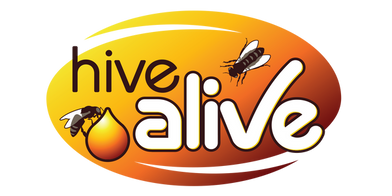HiveAlive cuts winter losses in half
Jul 04, 2025
Winter Colony Losses: HiveAlive Survey Shows Marked Improvement Compared to National Average
As concerns grow among beekeepers about rising winter colony losses, HiveAlive conducted a comprehensive survey of its customers in April 2025 to assess how well their colonies survived the 2024/2025 winter - and whether HiveAlive products played a measurable role in improving survival rates.
Earlier this year, multiple reports across the U.S. highlighted severe over-wintering losses, making it more important than ever to evaluate the effectiveness of nutritional interventions. With this in mind, HiveAlive surveyed its customer base to understand what products they used in Fall 2024 and throughout the winter of 2024/25, and how colonies fared by spring.
Purpose of the Survey
The aim of this survey was straightforward: to determine if feeding HiveAlive products going into winter had a positive effect on colony survival. HiveAlive asked beekeepers to share how many colonies they had in Fall 2024, which HiveAlive products they used to support their hives through winter, and how many colonies survived as of April 2025.
Survey Participation
There were a total of 304 qualified survey respondents. Not included were two respondents due to incomplete data. The results were compared to the Project Apis M National Hive Loss survey which had 846 respondents.
Geographic Spread of respondents
The map below shows the geographic distribution of survey respondents.

Figure 1: Geographic distribution of survey respondents
A Dramatic Difference from National Loss Rates
According to the most recent Project Apis M Survey, the national average for over-winter colony losses sits at a worrying 56%. In contrast, HiveAlive users reported significantly lower losses:

Figure 2: Over-winter colony losses by HiveAlive product v National average
These results represent a reduction in colony losses of over 50% for beekeepers using HiveAlive nutritional support - an important margin for anyone managing colony health.
Performance by Beekeeper Type
The survey also analyzed data by beekeeper operation size, allowing for a comparison between HiveAlive users and national trends reported by Project Apis m.:
 Figure 3: Losses based on beekeeper type. National Average vs HiveAlive Users
Figure 3: Losses based on beekeeper type. National Average vs HiveAlive Users
Additional insights into beekeeping practices and reasons for losses
The survey also asked what treatment methods were used. When it came to additional treatments used, Oxalic Acid was the most commonly used method among respondents to treat mites - further emphasizing the importance of integrated pest management as part of overwintering success.
Beekeepers were also asked to share the top reasons they believed contributed to their colony losses:
-
Beekeepers with the highest loss rates often associated losses with:
-
Starvation
-
Mite infestations
-
Beekeeper inexperience
-
Interestingly, for beekeepers who had the lowest rate of losses, they found that queen-related issues were the main reason for their losses - possibly indicating that despite better management the one thing beekeepers have minimal control over is queen loss or failure.
 Figure 4: What beekeepers thought were the cause of their losses
Figure 4: What beekeepers thought were the cause of their losses
Conclusion: A Proven Line of Defense Amid Emerging Threats
The results of the Winter 2024/Spring 2025 HiveAlive survey clearly show that HiveAlive nutritional products offer a powerful tool for improving winter colony survival. Whether you're a hobbyist, sideline operator, or managing a large commercial operation, the consistent reduction in losses - often more than 50% compared to national averages - demonstrates real-world value.
These findings come at a critical time. New research from the USDA’s Agricultural Research Service has linked recent, widespread honey bee colony losses to high levels of deformed wing virus A and B, along with acute bee paralysis virus. These viruses, spread by Varroa destructor mites, were found across collapsed colonies - along with evidence that Varroa mites are developing resistance to amitraz, a key miticide used nationwide.
With over 60% of commercial colonies lost since summer 2024 and an estimated $600 million financial impact, it's clear that beekeepers face an evolving threat landscape. While researchers continue to explore new parasite treatment strategies, this data suggests that HiveAlive’s science-backed nutrition can help strengthen bees against these stressors - helping colonies stay healthier and more resilient in the face of mounting biological and environmental challenges.
References:
https://www.projectapism.org/colony-loss-information
https://www.ars.usda.gov/news-events/news/research-news/2025/usda-researchers-find-viruses-from-miticide-resistant-parasitic-mites-are-cause-of-recent-honey-bee-colony-collapses/
